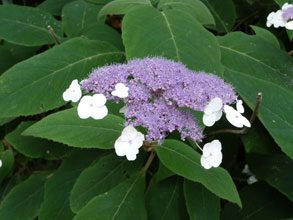 Every gardener needs time and thyme. We all know what time is; that thing that most of us waste too much of, but thyme is a plant. Thymus vulgaris is the one most commonly used in our kitchens; the ‘vulgaris’ in a botanical name means ‘common’ or ‘widespread.’
Every gardener needs time and thyme. We all know what time is; that thing that most of us waste too much of, but thyme is a plant. Thymus vulgaris is the one most commonly used in our kitchens; the ‘vulgaris’ in a botanical name means ‘common’ or ‘widespread.’
This particular species contains thymol, an oil used as an antiseptic. Before the advent of modern antibiotics, it was used to medicate bandages, and is still used commercial products such as Listerine.
However, there are over fifty varieties of thyme, and many of those can be used in garden as ornamentals and for kitchen use. The culinary varieties are evergreen, so we should use more of them.
All thymes are Mediterranean in origin. They prefer the hot, dry and rocky climate found there, so it’s a challenge to grow in our hot, wet and sandy climate. Except for the heat, our climates have nothing in common. But like many of our valuable non-natives, if you take a little extra care, you can successfully grow them.
So for thyme, grow it in pots. Clay pots, if you can. I’ve found that growing it in the clay orchid pots which have holes or slits in the sides as well as drain holes in the bottom, will most closely mimic its homeland. If the side openings are too big, you can prevent the soil from leaking out by lining the pot with screening or old panty hose. (Remember those? Most of we ladies abandoned them when we moved to the Lowcountry). Make sure the potting soil you use has lots of sand or Perlite because you want the soil to drain quickly. Thymes don’t like wet feet. And don’t fertilize too much; they like a lean soil. They also like a soil that’s a bit more acidic than the average potting soil, so adding a bit of lime to the soil would be beneficial.
They also like sun, so pick the sunniest spot in your garden. If you’re careful not to overwater, you can also grow a small pot on a sunny windowsill.
In more hospitable climates, it is often used as a ‘steppable’ or a ground cover. Steppables are small plants used between stepping stones. They must be hardy enough to survive being trodden upon.
Like sages, or Salvias, thyme has many cultivars which can smell and taste of lemon, orange, and lime, and some of caraway. All of them are ornamental, with tiny, tiny leaves and flowers. The stems are woody, so only the leaves are used in the kitchen. Running the twigs through the tines of a fork will remove the leaves quickly.
While most of us rely on the dried variety found in spice bottles, the result from using fresh thyme in food is very different. It lends a brighter, lighter flavor than dried. Like so many herbs, it can be frozen, so if you can’t find fresh, even frozen thyme is preferable to the dried version. Just make sure that you dry the twigs after you wash them before you put them in freezer bags. They will keep for several months if you’re careful to remove as much air from the bags as possible. I do this by rolling up the bag tightly before sealing, or even using a drinking straw to siphon out the air.








